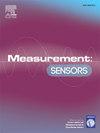基于光容积脉搏波信号的连续血压估计的深度学习方法
Q4 Engineering
引用次数: 0
摘要
由于血压变化很快,监测连续的血压(BP)信号是必要的。然而,目前基于光容积脉搏图(PPG)的血压估计方法需要更准确,并提供收缩压(SBP)和舒张压(DBP)的预测。材料和方法采用全周期的PPG波形来估计收缩压和舒张压值。本研究推荐深度学习技术,包括时间卷积网络(TCN)、长短期记忆(LSTM)、TCN-LSTM和自动编码器-LSTM,来估计收缩压和舒张压。结果该框架利用PPG信号精确估计连续BP。其中,Autoencoder-LSTM算法对收缩压和DBP的平均误差(Mean Average Error, MAE)分别为1.05和0.92,对收缩压和DBP的标准差(Standard Deviation, SD)分别为1.89和1.05,表明该模型适合从PPG信号中估计这些值。Autoencoder-LSTM方法对收缩压和舒张压的平均误差(MAE)分别为1.05和0.92,标准差(SD)为1.89和1.05,表明该模型可以使用PPG信号估计这些值。结论本文评价了一种利用PPG信号连续估计BP的算法。自编码器- lstm适合估计连续BP值,因为收缩压和舒张压的MAE和SD值较低。本文章由计算机程序翻译,如有差异,请以英文原文为准。
Deep learning approaches for continuous blood pressure estimation from photoplethysmography signal
Introduction
Monitoring continuous Blood Pressure (BP) signals is essential as BP can vary rapidly. However, current Photoplethysmography (PPG)-based methods for estimating BP need to be more accurate and provide predictions for Systolic Blood Pressure (SBP) and Diastolic Blood Pressure (DBP).
Materials and methods
Full cycle of PPG waveform is considered to estimate SBP and DBP values. This study recommends deep learning techniques, including Temporal Convolutional Network (TCN), Long-Short Term Memory (LSTM), TCN-LSTM, and Autoencoder-LSTM, to estimate SBP and DBP.
Results
According to the outcomes, the proposed framework estimates continuous BP precisely utilizing PPG signals. Specifically, the Autoencoder-LSTM algorithm achieved a Mean Average Error (MAE) of 1.05 and 0.92 for SBP and DBP and a Standard Deviation (SD) of 1.89 and 1.05 for SBP and DBP, respectively, indicating that the model is suitable for estimating these values from PPG signals. The Autoencoder-LSTM approach produced a Mean Average Error (MAE) of 1.05 and 0.92 for SBP and DBP, respectively, as well as a Standard Deviation (SD) of 1.89 and 1.05, demonstrating that the model can estimate these values using PPG signals.
Conclusion
This paper evaluates an algorithm that estimates BP continuously using the PPG signal. Autoencoder-LSTM is suitable for estimating continuous BP values since MAE and SD values are low for SBP and DBP.
求助全文
通过发布文献求助,成功后即可免费获取论文全文。
去求助
来源期刊

Measurement Sensors
Engineering-Industrial and Manufacturing Engineering
CiteScore
3.10
自引率
0.00%
发文量
184
审稿时长
56 days
 求助内容:
求助内容: 应助结果提醒方式:
应助结果提醒方式:


